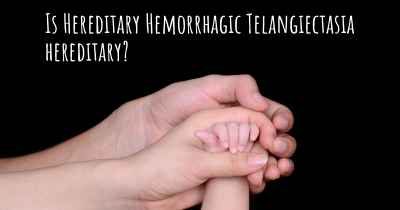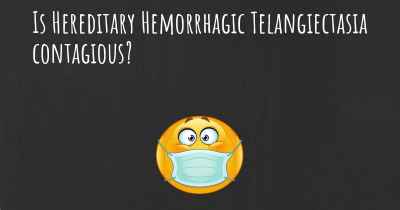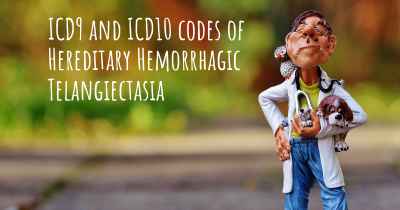What is the history of Hereditary Hemorrhagic Telangiectasia?
When was Hereditary Hemorrhagic Telangiectasia discovered? What is the story of this discovery? Was it coincidence or not?

Hereditary Hemorrhagic Telangiectasia (HHT), also known as Osler-Weber-Rendu syndrome, is a rare genetic disorder that affects the blood vessels. It is characterized by the development of abnormal blood vessels called telangiectasias, which are fragile and prone to bleeding. HHT can affect various organs in the body, including the nose, lungs, brain, and gastrointestinal tract.
The history of Hereditary Hemorrhagic Telangiectasia dates back to the late 19th century when it was first described by three physicians independently. In 1876, Sir William Osler, a Canadian physician, observed a family with recurrent nosebleeds and identified it as a hereditary condition. In 1889, Dr. Frederick Weber, a German physician, reported similar findings in another family. Later in 1896, Dr. Jay Rendu, a French physician, described the condition in more detail, highlighting the presence of telangiectasias.
Over the years, researchers have made significant progress in understanding the genetic basis of HHT. In the 1990s, two genes, ENG (Endoglin) and ACVRL1 (Activin A receptor type II-like 1), were identified as the primary causative genes for HHT. Mutations in these genes disrupt the normal development and maintenance of blood vessels, leading to the characteristic vascular abnormalities seen in HHT.
Since the discovery of the causative genes, numerous studies have focused on unraveling the molecular mechanisms underlying HHT. Researchers have identified several other genes, such as SMAD4 and GDF2, that can also be associated with HHT, albeit in a smaller proportion of cases. These genes are involved in the regulation of signaling pathways that control blood vessel formation and maintenance.
One of the major breakthroughs in HHT research came in 2006 when a group of scientists discovered that a protein called endoglin, encoded by the ENG gene, plays a crucial role in blood vessel development. They found that endoglin is involved in the TGF-β (Transforming Growth Factor-beta) signaling pathway, which is essential for proper blood vessel formation. Mutations in the ENG gene disrupt this pathway, leading to the development of abnormal blood vessels in HHT patients.
Understanding the genetic basis of HHT has paved the way for improved diagnosis and management of the condition. Genetic testing is now available to identify mutations in the causative genes, allowing for early detection and intervention. This is particularly important for individuals with a family history of HHT, as early diagnosis can help prevent complications and improve outcomes.
Furthermore, research efforts have focused on developing targeted therapies for HHT. One such therapy is the use of anti-angiogenic drugs, which inhibit the growth of abnormal blood vessels. These drugs have shown promising results in reducing nosebleeds and preventing complications in HHT patients. Additionally, advancements in interventional radiology techniques have enabled the treatment of arteriovenous malformations (AVMs) associated with HHT, reducing the risk of bleeding and other complications.
In recent years, there has been an increased emphasis on raising awareness about HHT among healthcare professionals and the general public. Patient advocacy groups and organizations have played a crucial role in educating individuals about the condition, promoting early detection, and supporting research efforts.
In conclusion, the history of Hereditary Hemorrhagic Telangiectasia spans over a century, starting with its initial description by Osler, Weber, and Rendu. The identification of causative genes and the understanding of molecular mechanisms have significantly advanced our knowledge of HHT. This has led to improved diagnostic techniques, targeted therapies, and increased awareness about the condition. Ongoing research continues to shed light on HHT, offering hope for better management and treatment options in the future.








